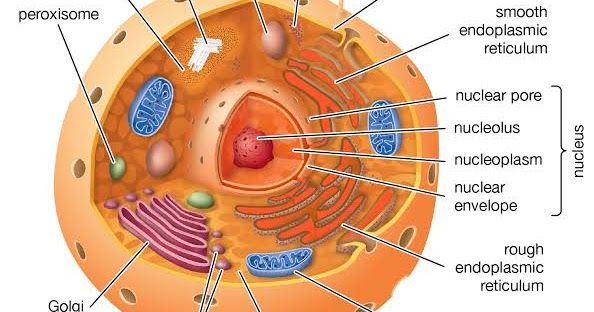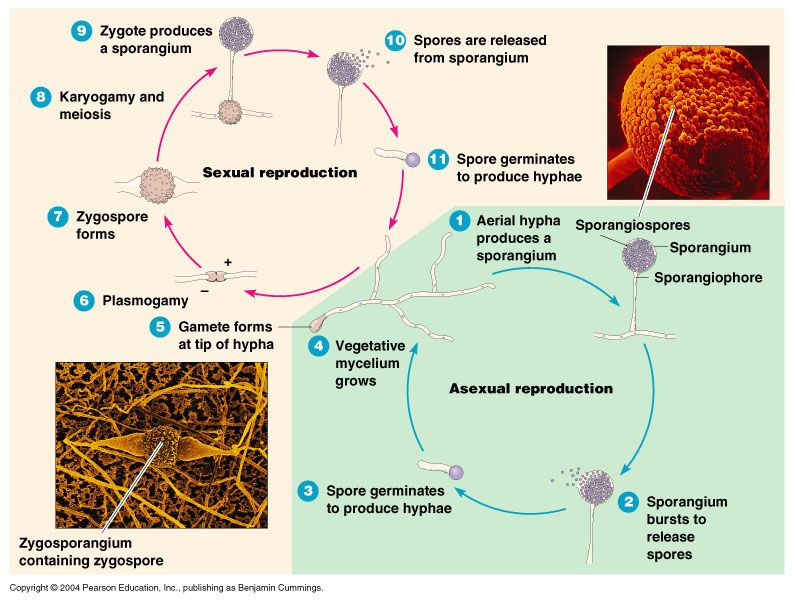are fungi eukaryotic
During rainy seasons youve probably noticed some sort of umbrella-like structure growing on dead woods grassland etc. They use complex organic compounds as sources of energy and carbon.

Prokaryotic Cell Vs Eukaryotic Cell By Nadiadaniela Prokaryotic Cell Eukaryotic Cell Prokaryotes
Fungi bind soil together by their filamentous form exudates and trophic interactions with all other groups of soil organisms.

. Most fungi are multicellular. A few types of fungi have structures comparable to bacterial plasmids loops of DNA. All multicellular organisms are eukaryotes. Fungi are eukaryotic organisms that comprise one of the kingdoms of life.
They are heterotrophic b. They reproduce by means of spores. Fungi are enormously important in carbon and nitrogen cycling. Answer 1 of 5.
Eukaryotic means with real nucleus. As eukaryotic organisms fungi possess cells with organelles which are structures surrounded by membranes. This chapter provides an overview of fungi and eukaryotic algae as both these groups share a range of morphologiesthat is from filamentous to cellular. However DNA comparisons have shown that fungi are more closely related to animals than plants.
Fungal cells also contain mitochondria and a complex system of internal membranes including the endoplasmic reticulum and Golgi apparatus. They may be unicellular or filamentous. They are classified under the kingdom Eukaryota. As eukaryotes a typical fungal cell contains a true nucleus and many membrane-bound organelles.
Most fungi are saprophytes organisms. A better term is. Reproduction in fungi is both by sexual and asexual means. They are multicellular animals c.
The predominantly single-celled organisms of the domains Bacteria and Archaea are classified as prokaryotes pro before. Fungi exhibit the phenomenon of alternation of generation. Fungi store their food in the form of starch. Candida albicans Aspergillus Blastomyces Coccidioides Cryptococcus.
Fungi are eukaryotic organisms that comprise one of the kingdoms of life. Fungi are a distinct kingdom of eukaryotic or prokaryotic mostly multicellular organisms that lack chlorophyll. Most fungi are aerobic e. Eukaryotic cells have a nucleus enclosed within the nuclear membrane and form large and complex organisms.
As eukaryotes fungal cells contain a membrane-bound nucleus where the DNA is wrapped around histone proteins. Fungi have nuclei and so they are eukaryotes. In comparison prokaryotes are typically unicellular. You are probably getting confused with protists.
Animals plants and fungi are the most familiar eukaryotes. Fungi are eukaryotic which means that on a cellular level they are closely related to other eukaryotic kingdoms such as animals and plants. Fungi are eukaryotic non-vascular non-motile and heterotrophic organisms. Fungi are not capable of photosynthesis.
Fungi include yeasts molds and fleshy fungi. Fungi were once considered plant-like organisms. They are called fungus pl. The term prokaryotic has been used to denote organisms that do not have a nucleus.
Animals plants fungi and protists are eukaryotes. Fungi are multicellular organisms meaning they are made up of many cells. All fungi have eukaryotic cells c. Yeasts are unicellular fungi that do not produce hyphae.
Fungi are microscopic or macroscopic non-chlorophyllated spore bearing filamentous heterotrophic thallophytes which reproduce asexually and sexually Animals are eukaryotic living organism that feeds on organic matter typically having specialized sense organs and nervous system and able to respond rapidly to stimuli. Both cells are the same but. Fungi are eukaryotic organisms that comprise one of the kingdoms of life. Fungus any of about 144000 known species of organisms of the kingdom Fungi including yeasts mildews molds and mushrooms.
Most fungi are multicellular. Learn more about their life cycles evolution taxonomy and features. Each cell is complex with a variety of functioning organelles inside. Fungi are are eukaryotic organisms and possess a cell wall.
Eukaryotic cells arose from prokaryotic cells and have a more complex organization than prokaryotic cells. Protozoa fungi plants and animals all have eukaryotic cells. In addition to the well-known macroscopic fungi such as mushrooms and molds many unicellular yeasts and spores of macroscopic fungi are microscopic. Few fungi are pathogenic to humans.
Fungi are some of the most widely distributed organisms on Earth and are of great environmental and medical importance. Fungi lack chlorophyll and hence cannot perform photosynthesis. Eukaryotes may be either unicellular or multicellular and include many cell types forming different kinds of tissue. Prokaryote kingdom consists of organisms which has simple structure most are singular-cell and some has simple muticellular structure.
Characteristics of Fungi. Fungi are eukaryotic like plants and animals. The fungi comprise a diverse group of organisms that are heterotrophic and typically saprozoic. Fungi are heterotrophic d.
They are all eukaryotes. As eukaryotic organisms fungi possess cells with organelles which are structures surrounded by membranes. Prokaryotic is a confusing term because it means before nucleus. Fungi are eukaryotic organisms.
They can maintain different environments in a single cell that allows them to carry out various metabolic reactions. Eukaryotic cells arose from prokaryotic cells and have a more complex organization than prokaryotic cells. Yeasts are eukaryotic microorganisms classified as members of the fungus kingdom with 1500 species currently identified and are estimated to constitute 1 of all described fungal species. Other eukaryotes are sometimes called protists.
All of the following statements about helminths are true except.

Fungi Cell Stock Vector Illustration Of Life Herbal 49947916 Fungi Cell Diagram Cell Wall

6 Differences Between Plant Cell And Fungal Cell Simple Point Wise Explanation Plant Cell Teaching Biology Cell Wall

Eukaryotes Comprise All Members Of Plantae Fungi And Animal Kingdomsincluding The Unicellular Fungus Yeast And Protozoans E Sel Hewan Dinding Sel Membran Sel

Eukaryotic And Prokaryotic Cells Science Educational School Posters Prokaryotic Cell Biology Classroom Biology Lessons

Eukaryote Vs Prokaryote Cell Type Organisms Educational Set With Bacteria Archea Fungi Protists Pla Prokaryotes Prokaryotes Vs Eukaryotes Prokaryotic Cell

The Eukaryotes Fungi Algae Protozoa And Helminths Fungi Algae Spore
Posting Komentar untuk "are fungi eukaryotic"